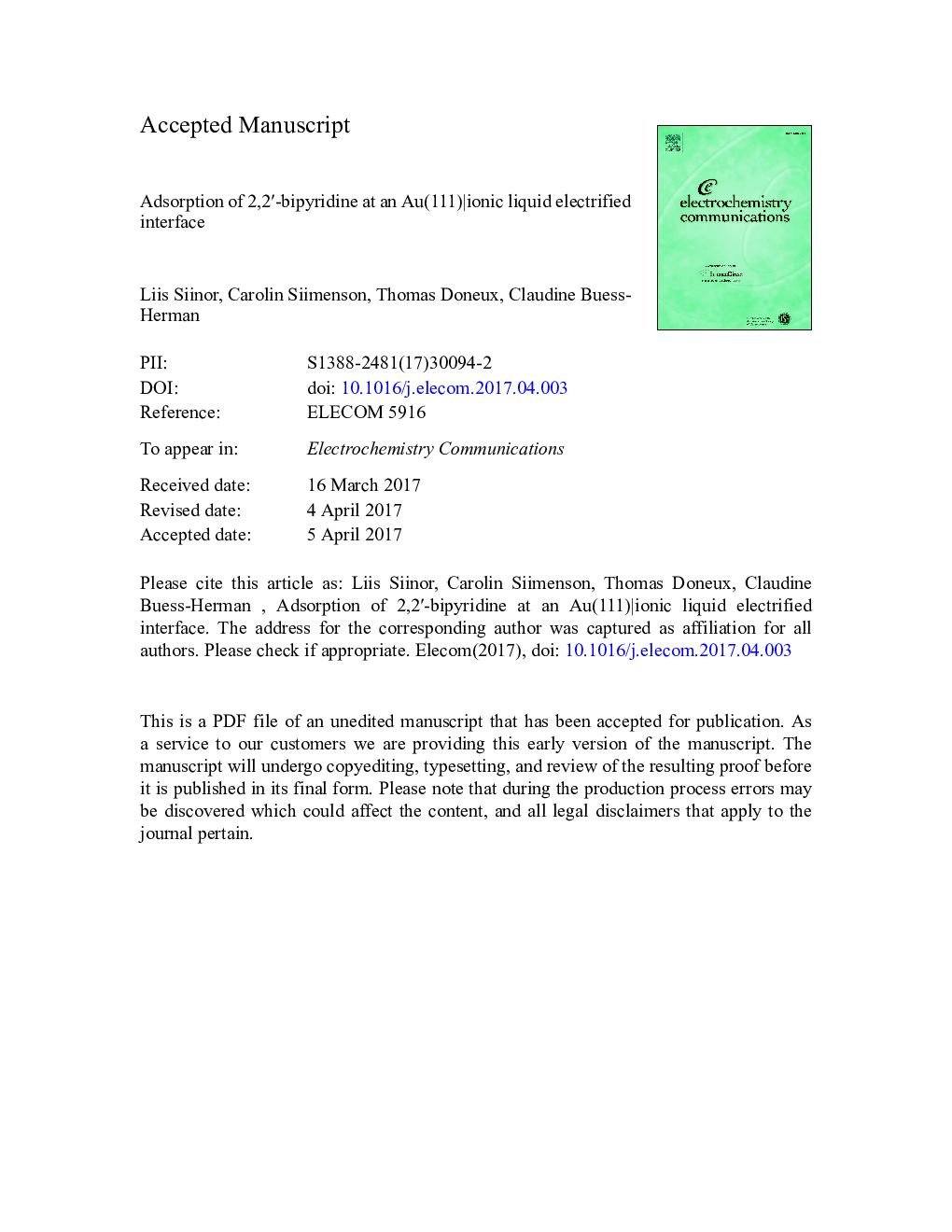| Article ID | Journal | Published Year | Pages | File Type |
|---|---|---|---|---|
| 4766486 | Electrochemistry Communications | 2017 | 16 Pages |
Abstract
The adsorption of added 2,2â²-bipyridine (2,2â²-BP) from 1-ethyl-2,3-dimethyl imidazolium bis(trifluoromethanesulfonyl)imide (EMMImNTf2) at an Au(111) electrode has been investigated using cyclic voltammetry (CV) and electrochemical impedance spectroscopy (EIS). Addition of 2,2â²-BP to the ionic liquid clearly modifies the interfacial region as a result of the competition between 2,2â²-BP and EMMImNTf2 to occupy the electrode surface. Within the region of ideal polarizability, the 2,2â²-BP adlayer undergoes structural changes, shown by the presence of peaks in the CV curves. Between â0.2 V and + 0.9 V, the capacitance-potential curves obtained from EIS data present a capacity maximum depending strongly on the ac frequency, which is typical pseudo-capacitive behavior indicative of a reorganization of the interfacial layer. At more positive potentials a true capacity value close to 10 μF.cmâ 2 and invariant with the potential suggests that the 2,2â²-BP molecules adopt a perpendicular orientation with the nitrogen atoms facing the electrode surface, similar to their adsorption on gold from aqueous solutions.
Related Topics
Physical Sciences and Engineering
Chemical Engineering
Chemical Engineering (General)
Authors
Liis Siinor, Carolin Siimenson, Thomas Doneux, Claudine Buess-Herman,
